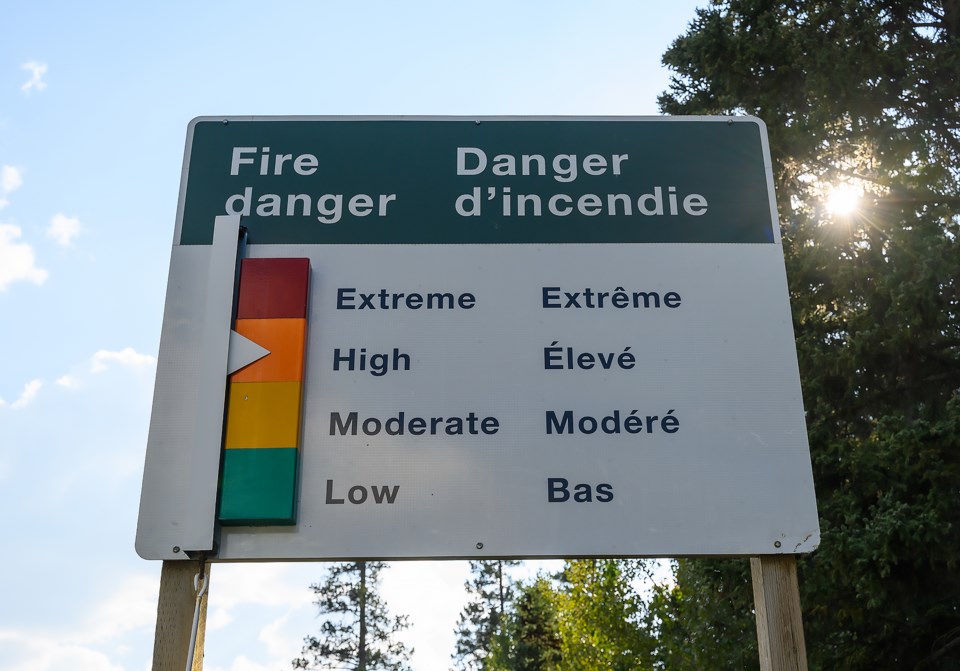BANFF – August was hotter and drier than normal.
Justin Shelley, a warning preparedness meteorologist with Environment Canada, said 35.3 mm of rain had fallen in Banff as of Aug. 27 compared to the monthly average of 60.1 mm.
“Right now, we’re sitting at about 59 per cent of normal for the month of August,” he said.
Shelley said temperatures earlier in the week in Banff have been above average, soaring to a high of 29.8 C on Tuesday and reaching 29.2 C on Monday, but no records were broken.
He said mid-August saw some very high temperatures for the region, with a stretch of several days reaching 30 C or more in Banff.
A temperature record of 31.1 C was set on Aug. 14, said Shelley, breaking the previous record of 30.5 C.
“The 15th and the 16th both were the third warmest for those days on record, but still a degree or more below the record high,” he said.
According to Environment Canada, the province will see an unsettled weather pattern over the remainder of the week with temperatures dropping closer to normal.
Temperatures are forecast at 19 C on Thursday, 21 C on Friday before climbing to 23 C and 21 C on Saturday and Sunday of the Labour Day long weekend.
“It looks like it could get a pretty good shot of rain here,” said Shelley.
According to the 2019 report Alberta’s Climate Future, almost every part of the province since the 1950s has experienced significant increases in winter temperature from 0.5 to 1 C per decade, and decreases in the frequency of cold days, and the proportion of winter precipitation falling as snow.
Over half of the province has also experienced significant increases in summer temperature from 0.1 to 0.3 C per decade, and some parts have also seen significant increases in warm days over 25 C and 30 C.
Many climate indicators for Alberta are projected to increase nearly linearly as global average temperature increases, though at a greater rate of change than the global average.
With the higher temperatures earlier in the week, the fire danger rating in Banff National Park has climbed to high.
The Calgary Forest Area (CFA), which includes the Bow Valley around Canmore and Kananaskis Country, climbed to very high on Monday due to ongoing tinder dry conditions.
“After only a few days of warm and dry conditions, the wildfire danger has quickly climbed back up,” said Anastasia Drummond, a wildfire information officer for the CFA, in an email.
“Some areas remain moderate to high, while pockets of extreme persist in the southern portions of the area.”
There are currently no active wildfires in the CFA. The CFA has responded to 70 wildfires this season, which have burned 6.43 hectares. All fires have been put out.
Since Jan. 1, 2023, there have been 985 wildfires recorded in Alberta, burning 1.9 million hectares.
There are currently 80 active wildfires in the province’s Forest Protection Area. One of the wildfires is classified as out of control, 20 are being held and 59 are under control.




